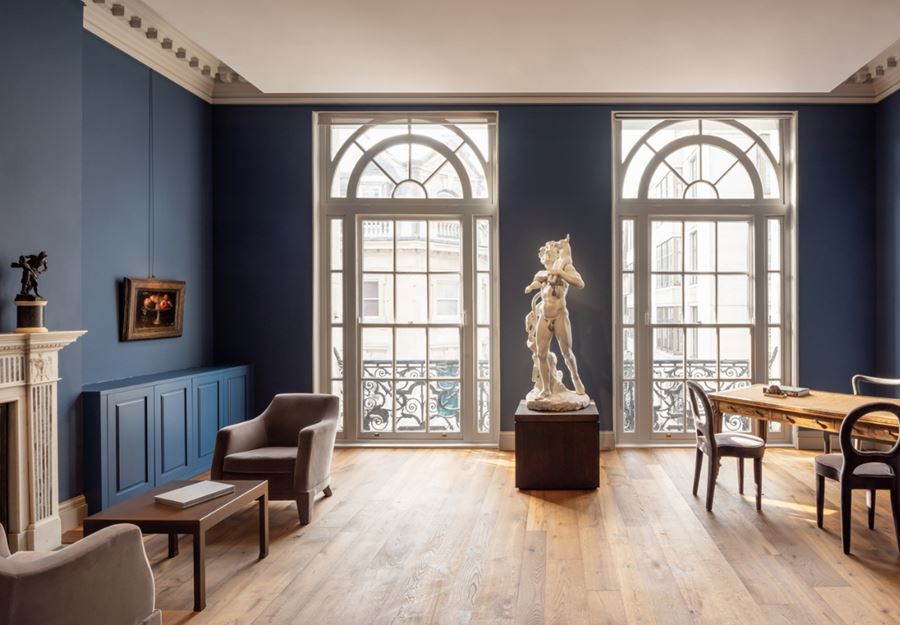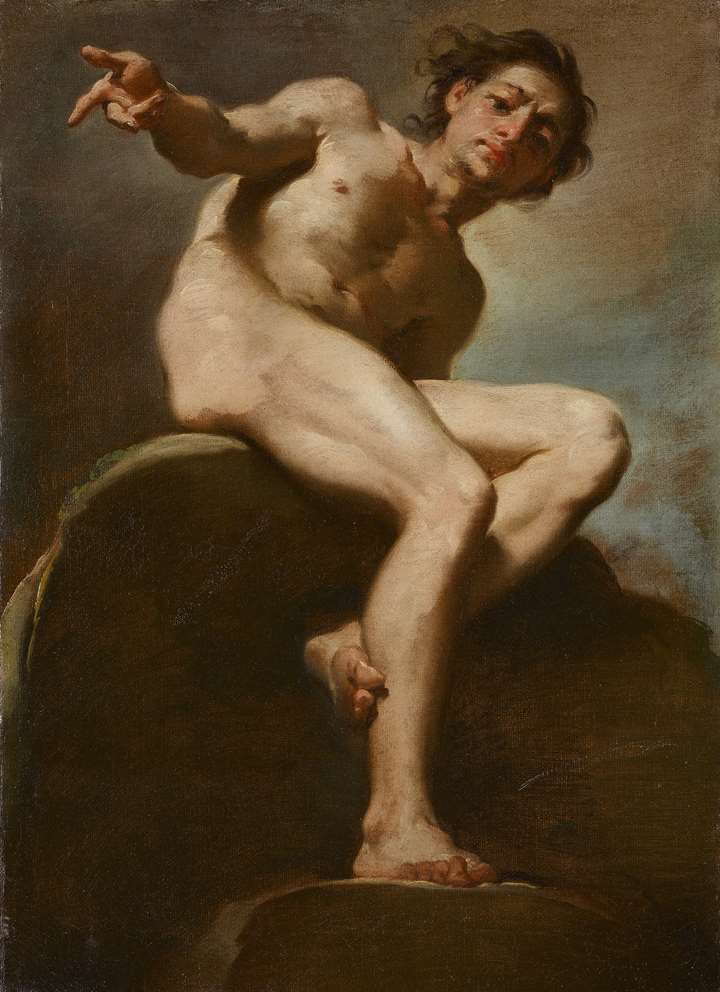Description & Technical information
On 1 January 1761 an agreement was signed in Florence between the sculptor Giovan Battista Piamontini (1695-1762) and the marquises Andrea (1691-1766) and his nephew Carlo Francesco Gerini (1738-1796). According to this paper, which was discovered and published by Martina Ingendaay in her book on Gerini art patronage,[1] the sculptor consented to sell to the Gerinis a marble statue by his late father, Giuseppe (1663-1744), and to carve himself another marble as a pendant to it. Giuseppe's statue was described, in the legal document, simply as 'representing a Milo' ('rappresentante un Milone'), that of his son was to be a Faun 'with a kid on his shoulders' ('con un capriolo sulle spalle'), and it was to be made after a model approved by Andrea and Carlo Francesco Gerini. The marbles were destined to a prominent place, two niches in the 'primo ricetto' – the first reception hall – of the Gerini palace. This palace was one of the most lavishly decorated patrician residences of Settecento Florence and housed a unique paintings gallery that grew from the seventeenth century on to become one of the most important in Florence.
[1] The agreement was published by Martina Ingendaay, I migliori pennelli. I marchesi Gerini mecenati e collezionisti nella Firenze barocca. Il palazzo e la galleria 1600-1825. 2 vols. Florence 2013, vol. 2, doc. 136, pp. 98ff.
Date: 18th century
Period: 18th century, 1750-1850
Origin: Italy
Medium: Marble
Dimensions: 150 x 60 cm (59 x 23⁵/₈ inches)
Provenance: Marquesses Gerini.
Literature: M. Ingendaay, I migliori pennelli. I marchesi Gerini mecenati e collezionisti nella Firenze Barocca. Il palazzo e la galleria 1600-1825, Milano 2013, p. 142
Categories: Sculpture

Discover the gallery
Trinity Fine Art
European Works of Art & Sculpture Old Master Drawings & Paintings
More Works From This Gallery

Trinity Fine Art
Three Male Nude Academic Studies
Ubaldo GANDOLFI (San Matteo della Decima, 1728 - Rome, 1781)
_T637293801401604357.jpg?width=720&height=1200&mode=max&quality=60)
Trinity Fine Art
Portrait of Marquess Giovanni di Jacopo Corsi (1600 – 1661)
MARIO BALASSI (Florence, 1604 - Florence, 1667)
_T636797066828973981.jpg?width=720&height=1200&mode=max&quality=60)
Trinity Fine Art
Faun with a Kid (after the Antique)
GIOVANNI BATTISTA Piamontini (Florence, 1690 - Florence, 1762)
, 1929_T637182342134200907.jpg?width=720&height=1200&mode=max&quality=60)
Trinity Fine Art
Rose al mattino (Roses in the morning)
Ubaldo Oppi (Bologna, 1889 - Vicenza, 1942)
_T637304106852311904.jpg?width=720&height=1200&mode=max&quality=60)
Trinity Fine Art
Bust of Cardinal Domenico Maria Corsi (1633 – 1697)
ALESSANDRO RONDONI
_T637274031893516988.jpg?width=720&height=1200&mode=max&quality=60)
Trinity Fine Art
Bust of Marquess Giovanni di Jacopo Corsi (1600 – 1661)
ALESSANDRO RONDONI

_T636797066828973981.jpg?width=560&height=700&mode=max&scale=both&quality=80)